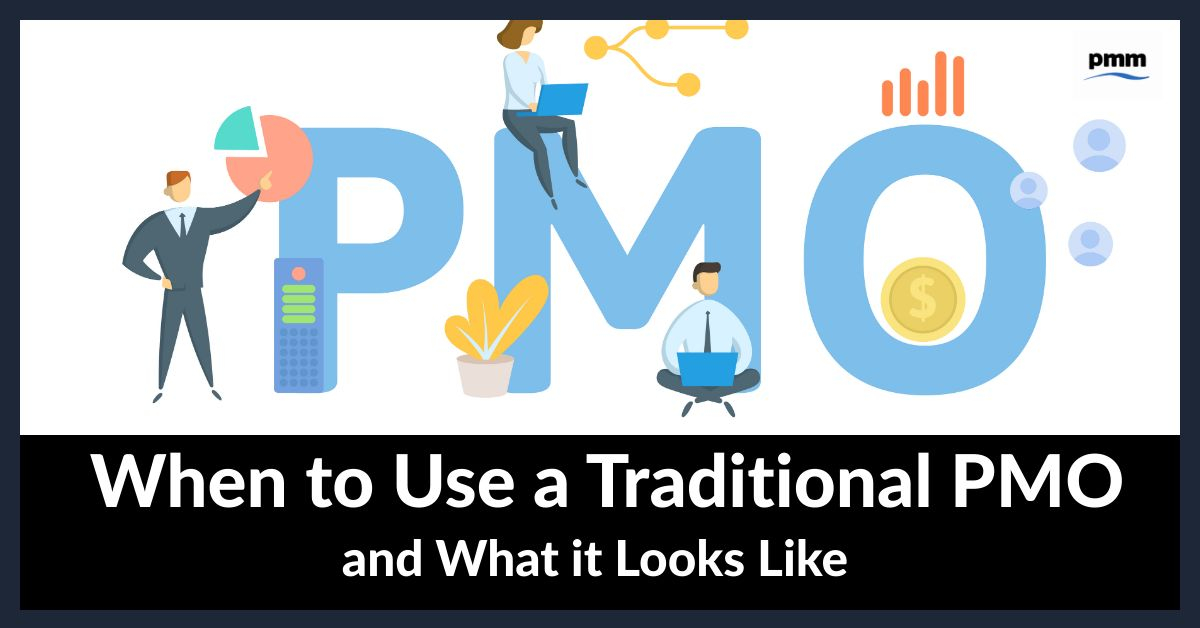There are many types of project management office (PMO) to choose from, all fitting into different organisations and fulfilling different needs. Here, we’re going to look at when to use and traditional PMO and what it will look like.
The name “traditional” might have you believe that this type of PMO would be used in traditional, mature businesses. That’s not always the case – it can work in start-ups too, depending on needs.
Whether you’ve been tasked with creating a PMO for a business, or are working on restructuring one that’s already in existence, you need to know what a traditional PMO looks like. To that end, we’re going to go through:
- The key roles of a traditional PMO
- How the roles can crossover or interact with other PMO definitions
- When to use a traditional PMO in an organisation
Giving you what you need to decide if this model works for you.
What does a traditional PMO do?
A traditional PMO may not actually be called that within the business – it’s probably just the PMO. The roles the office undertakes are going to be signs of whether you’d call it traditional or not. Let’s take a look at what type of activities you’d find in this office.
Project support
A traditional PMO take on project administration functions. This can include producing templates for project activities, such as:
- Project calendars
- Purchasing orders
- Program documentation
- Weekly and monthly report data
- Budget monitoring
This performs a dual function. First, it means that all projects are run in the same way so that project managers and team members can seamlessly move on to new projects without a culture shock. Second, it enables easier report production when everything is in the same format.
Having strong administration and project support tools can also lead a PMO to become a centre of excellence for management within the organisation, if that’s the direction you want to go in.
Monitoring deliverables
All PMOs will have a role on project deliverables. A traditional PMO will work mainly to monitor the deliverables; to see if they’re on track.
This type of PMO will create reports on a range of subjects, these can then be used to see if a project and a project manager are on track with their KPIs. Some reports you’d expect to see in order to monitor deliverables include:
- Weekly and monthly milestone reports
- Regular budgeting reports
- Resourcing reports
The traditional PMO will also distribute these reports across the stakeholders in the business.
Stakeholder engagement
All the reports that come from a traditional PMO need to go somewhere. It’s the job of the office to have them sent to the right people, which could be the C-suite sponsor, the teams that will be working with the project outcome, or even external stakeholders if it’s part of the agreement.
The PMO, being a central point of data, can also act as the go-between for stakeholders and project managers. Coordinating communications can be a key role of the traditional PMO since so much information is stored there.
What are the different definitions for a traditional PMO?
As we noted a little earlier, you’re unlikely to find your PMO marked as “traditional” even when it fits into the above roles. Because of the administration and report production that a PMO offers, it falls into the category of an administrative or reporting PMO.
Because it offers support to the projects under the office, you can also call this type of office a supportive PMO. This would be particularly true if the PMO is aiming to go down the route of becoming a centre of excellence for projects and management in general.
What are some use cases for a traditional PMO?
You’d use a traditional PMO as we’ve described here is a business that needs organisation. Whether there are lots of projects placed all over the business that need harmonising, or it’s a start-up that has thrown together projects as and when, a traditional PMO can bring a sense of order.
Due to the high-level reporting, a business that is focused on data and driving results through monitoring would also benefit from a traditional PMO.
The take home
Knowing when to use a traditional PMO and what it looks like will help you decide if this model is for you. It’s a PMO that stores data and templates and uses this to produce reports and hand them over to the right people in an organisation. When the company needs to improve its processes and procedures, a traditional PMO is ideal.


